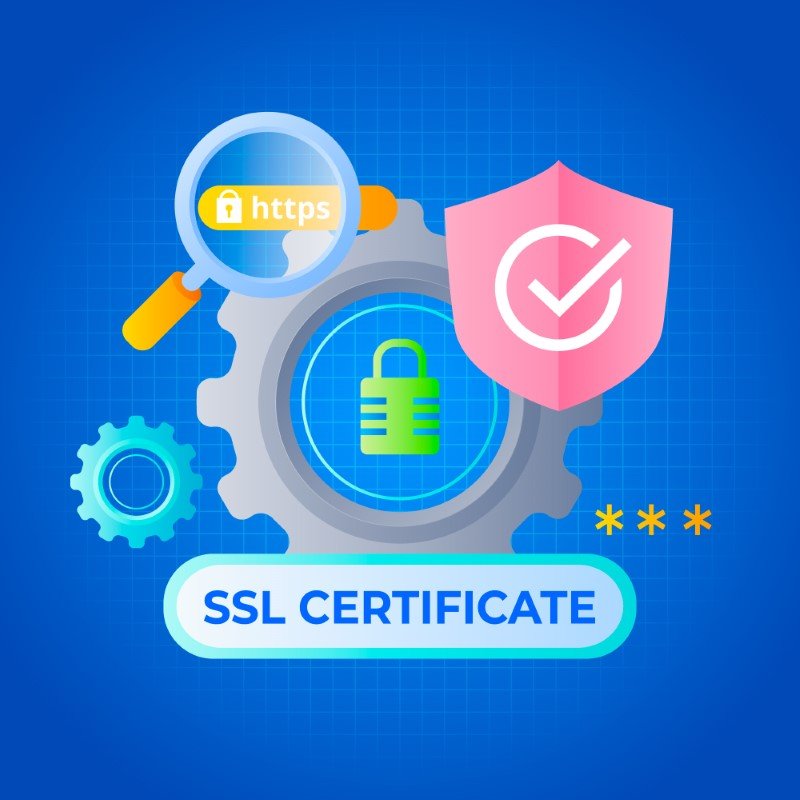In today’s data-driven world, databases are the backbone Databases are the backbone of every organization, powering business-critical applications and services. As such, database monitoring activities (or database performance monitoring) are crucial practices for ensuring optimal performance, security, and availability of these systems. By tracking specific metrics in real-time, database monitoring allows you to understand the health and behavior of your databases, enabling proactive troubleshooting and optimization.
With the growing importance of databases and the increasing complexity of modern architectures, incorporating robust database activity monitoring solutions and techniques has become essential. This guide will explore the fundamentals of database monitoring, its significance, and best practices for implementing effective monitoring strategies. Whether you’re a database administrator (DBA), developer, or IT professional, understanding database monitoring will empower you to maintain high-performing, secure, and reliable database environments.

Table of Contents
Database Activity Monitoring Overview
Database Activity Monitoring (DAM) refers to any solution used to actively monitor and analyze database activities DAM tools are multipurpose, typically employed by organizations to fulfill compliance criteria and protect sensitive data from external hackers and malicious insiders. These dam database tools are essential for securing dam data effectively.
Purpose and Need for DAM
By default, most databases do not log sufficient activity data to enable a comprehensive forensic investigation of historical breach events. Even if some logging occurs, it is often stored within the database itself, allowing attackers with write access to delete any activity rows associated with their data exfiltration. Consequently, the native database activity logging cannot be considered a reliable source of truth following an attack.
A core principle of empirical understanding is the ability to measure and record data, or observe events. As the risk of data breaches increases, there is a growing need to conduct forensic investigations to notify affected users per regulations, determine the attack vector, and address vulnerabilities. This has led many security decision-makers to seek solutions for database activity monitoring. recording all database query activity to enable future attack investigations.
Traditional DAM Implementation Approaches
Organizations typically adopt DAM security solutions deployed as agents on database machines or networks. A common approach is to forward database activity in near real-time to an offsite forensics service like Splunk, enabling post-mortem forensics by replicating queries, assuming no missing events. However, this real-time solution can impact database performance due to added compute and network overhead for every query.
Alternatively, organizations may copy a database’s native access metrics to an outside forensic service as a scheduled task. However, temporal replications (daily, weekly, etc.) do not guarantee a complete activity log, necessitating a purpose-built enterprise-grade DAM solution. Historically, database activity monitoring solutions have been relied upon for compliance, access control, threat detection, and vulnerability management.
Limitations of Traditional Approaches
Traditional DAM approaches have limitations, such as:
- Performance impact: Real-time monitoring can add compute and network overhead, affecting database performance.
- Incomplete logs: Scheduled replications may not capture all activity, requiring a dedicated DAM solution.
- Limited visibility: Native database logging may not provide comprehensive visibility into privileged user activities and SELECT transactions, highlighting the need for privileged user monitoring.
- Lack of correlation: Aggregating and correlating activities across heterogeneous databases can be challenging.
- Security concerns: Stored audit logs within the monitored database can be vulnerable to tampering.
To address these limitations, modern DAM solutions aim to provide comprehensive monitoring, secure log storage, policy enforcement, and cross-database correlation while minimizing performance impact. These database activity monitoring solutions are designed to enhance overall security and operational efficiency.
Changing Requirements Landscape
Increasing Data Volumes and Regulatory Scrutiny
As data volumes continue to grow exponentially Organizations face mounting challenges in securing their data repositories from cyber threats and accidental exposure. This upward trend in data storage has been accompanied by increased regulatory scrutiny, further compounding the complexities of operating modern cloud applications in a secure and compliant manner. Implementing effective data loss prevention strategies is crucial in this context.
Implementing traditional Database Activity Monitoring (DAM) solutions is often inadequate for addressing these evolving challenges, especially as organizations shift their workloads to the cloud. In cloud environments, databases are frequently consumed as managed Software-as-a-Service (SaaS) offerings, leaving no room for server or network-based agents typically used in traditional DAM implementations. As a result, monitoring database activities in the cloud necessitates a service capable of intercepting database queries at the data endpoint. Advanced database activity monitoring solutions are essential to meet these needs.
Challenges in Cloud Environments
When implementing a solution that intercepts and replicates database queries to an offsite forensics service in real-time, the performance impact of outbound API requests must be carefully considered. To prevent delays in query execution and maintain optimal database performance, these queries should be forwarded asynchronously to the forensics service (e.g., Splunk). Executing database queries sequentially can severely limit the performance of production databases, making it challenging to implement and maintain database performance when using traditional DAM approaches. A novel parallel architecture that can monitor database activities without hindering performance is required to address these challenges effectively. Utilizing advanced database monitoring services can help achieve this balance.
As organizations explore multi-cloud or hybrid cloud approaches, monitoring databases across diverse cloud infrastructures becomes increasingly complex. Research indicates that 80% of organizations suffer from widening visibility gaps across their cloud infrastructure, impairing their ability to track workload performance, security threats, and cloud costs.
Implementing cloud monitoring presents frequent challenges, such as scalability bottlenecks when monitoring hundreds of cloud components simultaneously, lack of standardized configurations, dynamic environments leaving components unmonitored, and difficulties in selecting the right metrics for all services. Addressing these challenges is crucial for maintaining visibility and control over database activities in cloud environments. Effective database monitoring services can play a pivotal role in overcoming these obstacles.
To manage evolving data needs effectively, organizations must understand the sources, types, formats, and quality of their data, as well as how it relates to their business objectives and data models. Implementing robust data classification and data discovery processes is essential in this regard. Conducting regular data audits Developing robust data integration and transformation plans, implementing stringent data validation procedures, and employing data management tools are essential steps in this process. Effective data discovery methods can significantly enhance these efforts.
Moreover, database designs must be modular, extensible, and observable to accommodate new data types, characteristics, and relationships. Prioritizing modular and scalable database architectures, utilizing normalization and abstraction techniques, maintaining comprehensive data dictionaries and metadata, and embracing agile methodologies and cross-functional collaboration are crucial for creating efficient and adaptable database systems. Advanced database management systems can support these requirements.
To address evolving performance needs, organizations should consider leveraging cloud-native monitoring tools that offer real-time insights and auto-scaling capabilities. Periodically revisiting indexing strategies and exploring machine learning-based performance optimization tools can also help optimize database performance as data grows and access patterns change. Utilizing advanced database monitoring services can further enhance performance optimization.
Implementing DataOps principles, which combine DevOps practices with data engineering, can enable automated root cause analysis and provide recommendations for issue resolution, enhancing the reliability, robustness, and consistency of data pipelines. This approach facilitates on-demand, on-command analytics by ensuring observability and transparency across the data value chain.
Cloud-Native Data Activity Monitoring
Need for a New Generation of DAM
Database Activity Monitoring (DAM) security has historically been a key technology to measure access policy compliance for prior generation infrastructure, such as on-premises databases. However, the need for a new generation of Data Activity Monitoring cannot be ignored as the costs of database breach events continue to rise in terms of customer trust, regulatory fines, and real damages. Traditional DAM that detects anomalies and violations after-the-fact in an offsite log has shown to be inadequate.
In today’s world, where data is considered the new currency, the frequency of data breaches continues to rise, causing significant financial losses and reputational damage when data security is compromised. Implementing robust data loss prevention strategies is crucial in mitigating these risks. Organizations must safeguard their data against potential threats, ensure compliance with ever-evolving regulations, and maintain efficiency in the face of constant technological change. Legacy DAM solutions, initially designed for on-premises databases, may fall short in addressing the complexities of modern cloud environments, highlighting the need for advanced database activity monitoring solutions.
Challenges in Implementing Cloud-Native DAM
Measuring database queries at the endpoint, in situ, presents an enormous challenge. Traditional DAM products were built with SQL-based RDBMS in mind, whereas the cloud data for most organizations tends to be heterogeneously distributed across SQL, NoSQL, and topic-based repositories. Introducing a ‘thick’ layer of architecture to intercept, record, and decide whether to block or forward database queries can severely affect the performance of the applications and services that access these cloud-native distributed data repositories. What is required by modern cloud architecture is a ‘thin’ interception layer in time space, ideally one that has negligible effect on database response time and can work across modern database grammars and protocols, ensuring effective database endpoint monitoring.
Unlike traditional DAM solutions, cloud-native monitoring solutions like SecuPi’s Proactive DAM do not require installing agents on databases, providing multiple deployment options and ensuring minimal impact on database performance. Extensive logging is unnecessary, contributing to the solution’s efficiency. Legacy DAM solutions often struggle to identify real users, relying on service accounts and generic DBA accounts, while SecuPi’s Proactive DAM offers real-time user activity monitoring, providing visibility into actual users, including application and analytics users, making it one of the most comprehensive database activity monitoring solutions.
Implementing effective cloud-native monitoring brings numerous benefits, such as optimized performance, efficient resource utilization, enhanced security, and better user experience. Utilizing advanced database monitoring services can significantly enhance these benefits.. However, frequent challenges in the implementation of cloud monitoring include scalability bottlenecks when monitoring hundreds of cloud components simultaneously, lack of standardized configurations, dynamic environments leaving components unmonitored, and difficulties in selecting the right metrics for all services. Overcoming these challenges is essential for the success of database monitoring services.
The Next Generation: Cloud Native Data Activity Monitoring with Cyral
Today’s organizations seek solutions that address the cloud-native gap in traditional DAM technologies, guaranteeing complete database activity observation without performance limitations. Cyral has developed patented technologies that successfully capture data activity, as measured directly at the data repo endpoint.negligible (microsecond) performance change.
Cyral’s Patented Approach
By integrating the solution with Authentication and Authorization services, Cyral captures the context of specific user-level activity within metadata for each query. This enables Cyral’s technology to monitor activity for anomalies and violations from data access policies, and alert and block queries in real-time.
As organizations move critical datasets to the cloud, they need a DAM solution that works for the cloud. Two key considerations practitioners face when it comes to the cloud, which were irrelevant for on-prem workloads, are:
- The inefficacy and challenges for network-based and agent-based DAM solutions when it comes to the cloud.
- The availability of tools and services in a typical cloud environment that were difficult to gain in an on-prem setting.
A DIY DAM is generally built by stitching a range of cloud-native components together. Since the comparison for most teams is against network-based and agent-based DAM solutions, they only care about the following underlying functionalities:
- Log generation: administrators can turn on native database logging to obtain logs.
- Log collection: logs can be collected using standard log management tools.
- Reporting and alerting: this can be done via a myriad of standalone services.
While a DIY solution is cheap and can tick some DAM requirements, it is typically limited to alerting or reactive actions. Adding real-time response requires a proxy-based DAM architecture that can provide policy enforcement and consistent visibility, ideally without any impact on performance or scalability.
A proxy-based DAM is useful because it can generate enriched logs with additional context on where the request came from, who made it, and other attributes (which are often vendor-dependent). A proxy-based DAM is required because the activity of all application users shows up as requests from a single service account, making the logs noisy and ineffective (only a few vendors have the ability to disambiguate service account users). A proxy-based DAM is recommended because policy enforcement is very difficult to accomplish using database-level policies. A proxy-based DAM is required because the policies to prevent data insertion, deletion, and/or update need to be externally managed. A proxy-based DAM is highly recommended because privacy initiatives mandate the ability to dynamically mask data, which is extremely complex to accomplish using database policies.
Features and Benefits
With Cyral’s intelligent data security platform, you can see, control, and protect every piece of your data in databases and data lakes – all without impacting performance and agility. The cornerstone of the Cyral data security platform is to provide identity attribution for users and services accessing different data repositories. Cyral transparently captures user identity and brings identity-centric controls to the center of your data security and governance operations, making it one of the leading database activity monitoring tools.
With 20+ patents pending Cyral’s technology enables consistent visibility, access control and authorization, and empowers DevOps and Security teams to automate their data security management workflows and data theft prevention. The company’s security as code approach improves collaboration between security and DevOps teams, and no changes to your applications, tools or workflows are required, making deployments a breeze with the help of advanced database activity monitoring tools.
Performance and scalability are key considerations for organizations who want to take full advantage of cloud data protection solutions. Cyral’s cloud-native architecture enables high availability and fail-open deployments without impacting latency overhead or sacrificing scalability or agility.
Get unified visibility into all data activity across all your data endpoints from any user, application, tool or service. Cyral helps organizations simplify audits, speed up forensics and reduce mean time to resolution. Native reporting from data repositories is slow, lacks identity or context information, and makes troubleshooting and auditing complex, often exposing PII and other sensitive data. With Cyral, database user activity is monitored efficiently to ensure comprehensive security.
Cyral transparently intercepts requests to all data endpoints and captures activity in real-time. The logs, metrics and traces are enriched with identity and other context information. Cyral is lightweight and runs in parallel with the data traffic, with no impact on performance. Generate detailed, unified activity logs for all your structured and semi-structured data stores without impacting performance or scalability of the repositories. Send them encrypted to your favorite SIEM using signed API requests to protect against tampering, and build your dashboards in your favorite tools. Security Information and Event Management systems enable the collection, transformation and analysis of data activity from various sources to help security teams detect threats, investigate events and pinpoint breaches. Cyral stands out among database activity monitoring tools by providing enriched, real-time data logs.
Cyral’s multi cloud database security monitoring provides centralized and consistent security across a variety of relational, NoSQL, object (blob) store databases, and data lakes. Manage database user privileges, monitor user behavior with data, and provide database activity logs and approval audits. Multicloud DAM functionality is critical to enforce privacy and data security policies that will enable regulatory compliance with data protection and privacy laws. By monitoring and auditing user activity to data, it helps prevent malicious activity and manages appropriate business use of data, as well as the audit records that will be essential for incident responses. Cyral’s advanced database activity monitoring tools ensure robust security and compliance.
Other key benefits of Cyral include consistent visibility into all data activity, simplified audits and troubleshooting, fulfillment of FEDRAMP, FISMA and DISA-STIG, control access down to the field level, and identification of malicious activity across environments. Cyral simplifies account administration and enables you to authenticate users into your databases and data lakes using their SSO credentials. Cyral records activity by applications, tools and services at no impact to performance or scale. Cyral automatically logs to your existing SIEM, such as Splunk, Datadog, Sumo Logic and ELK, in real-time, and lets you keep your existing workflows and response playbooks, creating flexible database monitoring tools. Collect identity-enriched logs and metrics for all activity against your databases, pipelines and data lakes, and get the real-time visibility and actionable context you need using your existing SIEM tools, speeding up troubleshooting and simplifying audits.
For the first time, Cyral is enabling technologists to intercept all requests to databases, data pipelines or data warehouses in real-time, without any impact on performance or scalability, inventing a new data layer sidecar to enable unprecedented observability, control and protection for your modern data flows. The key to intercepting data mesh requests is to build a featherweight, stateless interception service that can be easily deployed in the customer’s environment, called a data layer sidecar.
Cyral’s data layer sidecar is stateless – unlike traditional application proxies, the sidecar defers all session state management to the data cloud connections themselves, allowing multiple sidecars to be deployed in a high-availability configuration and enabling a true fail-open design. It is optimized for output filtering – the great majority of requests to the data mesh are read requests, so it is fine for a malicious read request to hit the data mesh, as long as the results are not returned. This led to Cyral’s unique sidecar design optimized for output filtering, where the sidecar can pass read requests to the data mesh without any delay while blocking their corresponding results if the request is determined malicious or disallowed.
Cyral’s sidecar is cloud-native – born in the cloud and built with the flexibility to be deployed to fit your environment, either in your cloud or on-prem environment as a Kubernetes service, Auto Scaling group, or host-based install, with all the data flows and sensitive information staying inside your environment where the sidecar is deployed, creating no risk of spillage. You can deploy Cyral sidecars however best fits your environment and easily administer them using Cyral’s SaaS-based Control Plane or your existing Infrastructure as Code tools.
Data mesh performance and scalability for read requests are critical aspects of every application design. Since the Cyral sidecar sits in the datapath and intercepts all requests inline, it is imperative that it imposes near-zero overhead on performance and scalability. The key insight is that a read request requires the data repository to do much more work than Cyral, which only has to match it against policies. Additionally, from a security perspective, it is okay for a malicious or unauthorized read request to reach the data cloud, as long as the results can be blocked. This allows the Cyral sidecar to optimize for performance for read requests by doing its policy checks asynchronously and protecting the data cloud from malicious reads by blocking the results, or output filtering.
Cyral’s YAML-based policy syntax gives you context-rich, highly granular enforcement over who can access what data. With Cyral policies, disallowed accesses can be blocked or trigger an alert. Cyral Policies rely on information types, without having to worry about the exact location of individual data fields, using a datamap that supports both custom types and automated location discovery, making writing and maintaining the policies simple.
Cyral integrates with popular identity providers so you can apply policies to specific groups or individual users, making it easy to extend identity control to data cloud components that do not support SAML or OpenID integration. For example, with Cyral, you can require 2FA checks before your users access very sensitive data. Cyral Policies can limit data access to specific tools, CIDR, containers, or even time windows, enabling ephemeral access – you can allow engineers or contractors to temporarily access databases without worrying about password rotation or user management.
Cyral is your last line of defense to directly monitor all data accesses and automatically detect threats targeted at your data mesh. Threats are detected in real-time, and alerts can be sent to tools of your choice. Cyral implements the popular MITRE ATT&CK framework for classifying threats and measuring risk, and severity levels can be controlled using APIs, avoiding alert fatigue.
Cyral is API-first and designed to support continuous deployment of services and applications. Cyral Sidecars can be integrated into a canary deployment, so your policies can be updated in tandem with application version updates, allowing DevOps processes to continue smoothly. Cyral automates data security by keeping stateless security policies in sync with evolving application versions, reducing false positives. Cyral’s baselining and anomaly detection algorithms are also a part of the application development process, further reducing false positives.
Conclusion
Therefore, I will incorporate this instruction while writing the conclusion section, ensuring that the language used is easy to understand for beginners. Here is the conclusion:
In today’s data-driven world, effective database monitoring has become crucial for ensuring optimal performance, security, and availability of your data systems. By implementing robust database monitoring activities, you can proactively identify and address issues, optimize resource utilization, and maintain the integrity of your data.
As you embark on your database monitoring activities journey, remember to keep things simple and focus on the fundamentals.Start with a clear understanding of your monitoring requirements and gradually expand your monitoring capabilities as your needs evolve. Leverage modern, cloud-native monitoring solutions that offer seamless integration, scalability, and minimal performance impact. With the right approach, you can unlock the full potential of your data assets while mitigating risks and ensuring compliance with effective database monitoring solutions.
FAQs
To effectively monitor a database, you should:
- Forecast future hardware needs based on how the database is currently used.
- Analyze how well individual applications or SQL queries are performing.
- Keep track of how indexes and tables are utilized.
- Identify the reasons behind poor system performance.
The most crucial performance metrics to monitor in a database include:
- Memory capacity: This involves observing how data blocks read from disk are stored in memory using the buffer cache.
- Cache hit ratio: This measures the effectiveness of the cache in retrieving data.
- Page life expectancy: This indicates the duration data pages stay in the buffer cache before being removed.
- Checkpoint pages per second: This tracks the number of pages flushed to disk from the buffer cache per second.
- Resource usage: Monitoring the usage of CPU, memory, and other resources.
- Row counts: Keeping track of the number of rows in tables to monitor growth.
- Database file I/O: Assessing the input/output operations on database files.
- Lock waits: Monitoring the frequency and duration of lock waits which can affect performance.
Effective database management involves:
- Setting clear business objectives.
- Developing and enforcing policies and procedures, including those for backup and recovery.
- Prioritizing security to protect data.
- Ensuring high data quality and minimizing duplicate data entries.
- Enhancing data accessibility to facilitate business operations.
To monitor activity within a database, you can use:
- Logs: These provide a record of database activities.
- Metrics: These are quantitative measures that track various aspects of database performance.
- Traces: These help in tracking specific requests or transactions as they pass through the database system.
Get Your Website Free Audit Report Today!
Newsletter
Latest Post

SEO Optimization Companies: Best Picks for 2024

Web Application Basics: Everything You Need to Know


Small Business Bookkeeping: Essential Tips for 2024


